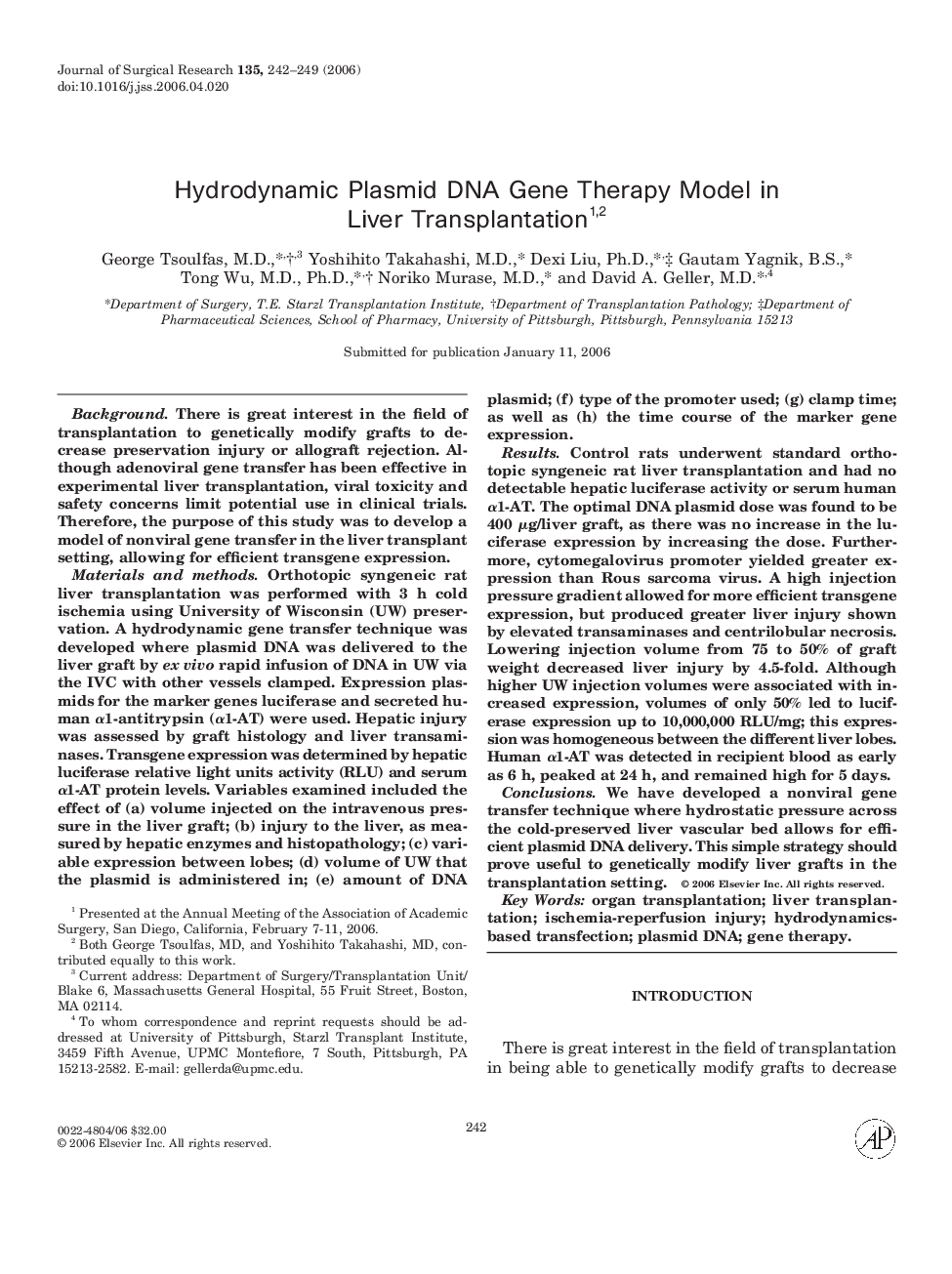| Article ID | Journal | Published Year | Pages | File Type |
|---|---|---|---|---|
| 4304888 | Journal of Surgical Research | 2006 | 8 Pages |
BackgroundThere is great interest in the field of transplantation to genetically modify grafts to decrease preservation injury or allograft rejection. Although adenoviral gene transfer has been effective in experimental liver transplantation, viral toxicity and safety concerns limit potential use in clinical trials. Therefore, the purpose of this study was to develop a model of nonviral gene transfer in the liver transplant setting, allowing for efficient transgene expression.Materials and methodsOrthotopic syngeneic rat liver transplantation was performed with 3 h cold ischemia using University of Wisconsin (UW) preservation. A hydrodynamic gene transfer technique was developed where plasmid DNA was delivered to the liver graft by ex vivo rapid infusion of DNA in UW via the IVC with other vessels clamped. Expression plasmids for the marker genes luciferase and secreted human α1-antitrypsin (α1-AT) were used. Hepatic injury was assessed by graft histology and liver transaminases. Transgene expression was determined by hepatic luciferase relative light units activity (RLU) and serum α1-AT protein levels. Variables examined included the effect of (a) volume injected on the intravenous pressure in the liver graft; (b) injury to the liver, as measured by hepatic enzymes and histopathology; (c) variable expression between lobes; (d) volume of UW that the plasmid is administered in; (e) amount of DNA plasmid; (f) type of the promoter used; (g) clamp time; as well as (h) the time course of the marker gene expression.ResultsControl rats underwent standard orthotopic syngeneic rat liver transplantation and had no detectable hepatic luciferase activity or serum human α1-AT. The optimal DNA plasmid dose was found to be 400 μg/liver graft, as there was no increase in the luciferase expression by increasing the dose. Furthermore, cytomegalovirus promoter yielded greater expression than Rous sarcoma virus. A high injection pressure gradient allowed for more efficient transgene expression, but produced greater liver injury shown by elevated transaminases and centrilobular necrosis. Lowering injection volume from 75 to 50% of graft weight decreased liver injury by 4.5-fold. Although higher UW injection volumes were associated with increased expression, volumes of only 50% led to luciferase expression up to 10,000,000 RLU/mg; this expression was homogeneous between the different liver lobes. Human α1-AT was detected in recipient blood as early as 6 h, peaked at 24 h, and remained high for 5 days.ConclusionsWe have developed a nonviral gene transfer technique where hydrostatic pressure across the cold-preserved liver vascular bed allows for efficient plasmid DNA delivery. This simple strategy should prove useful to genetically modify liver grafts in the transplantation setting.
